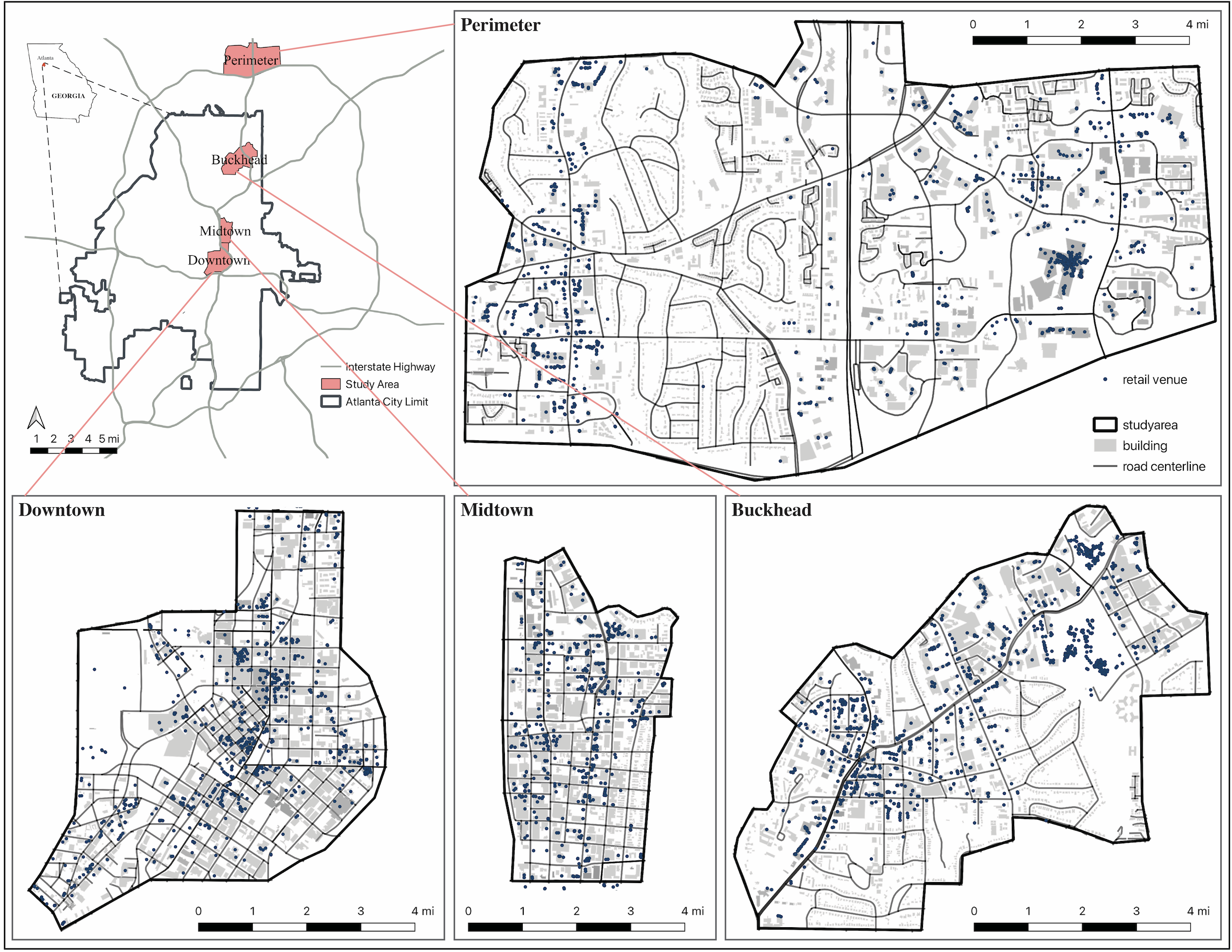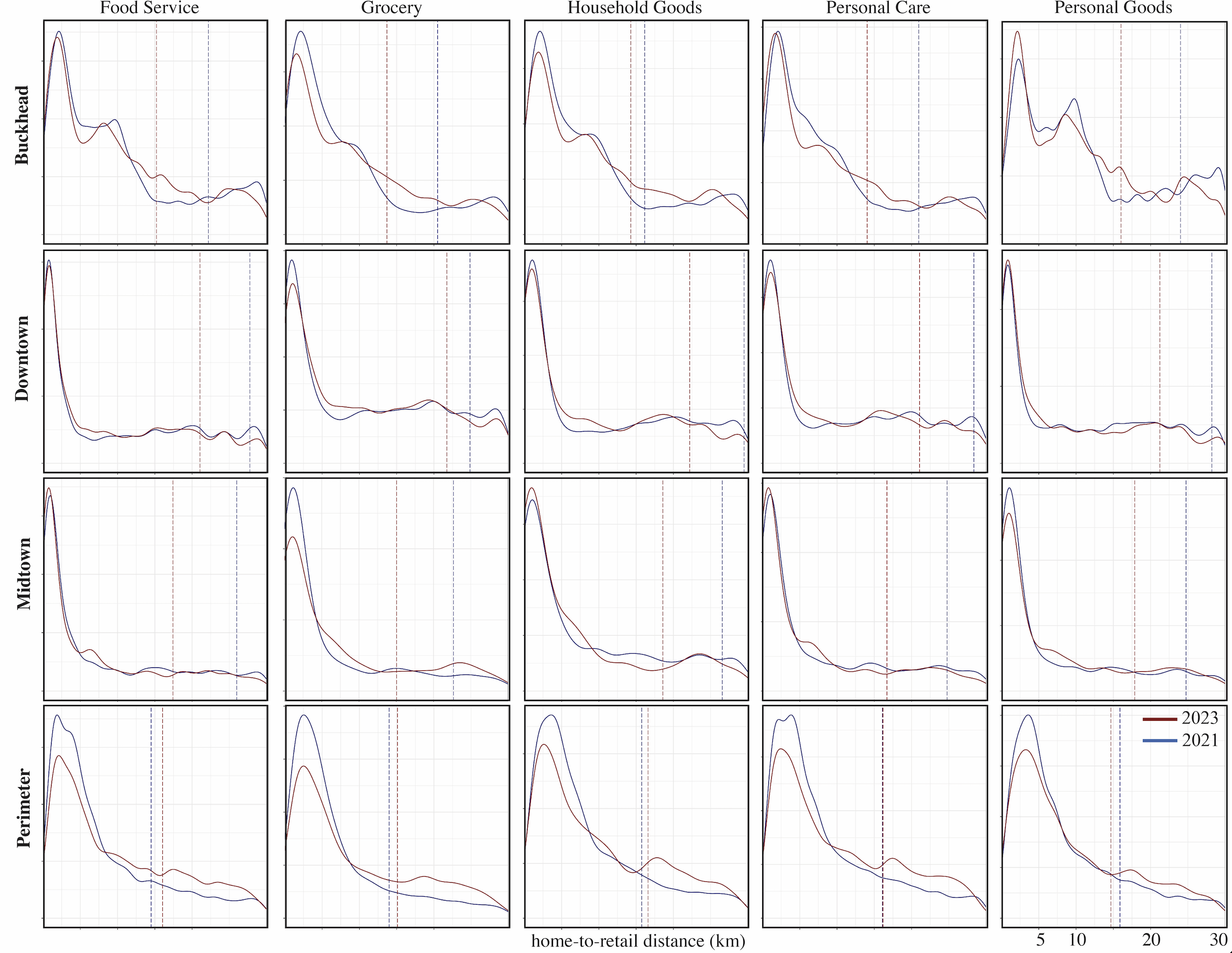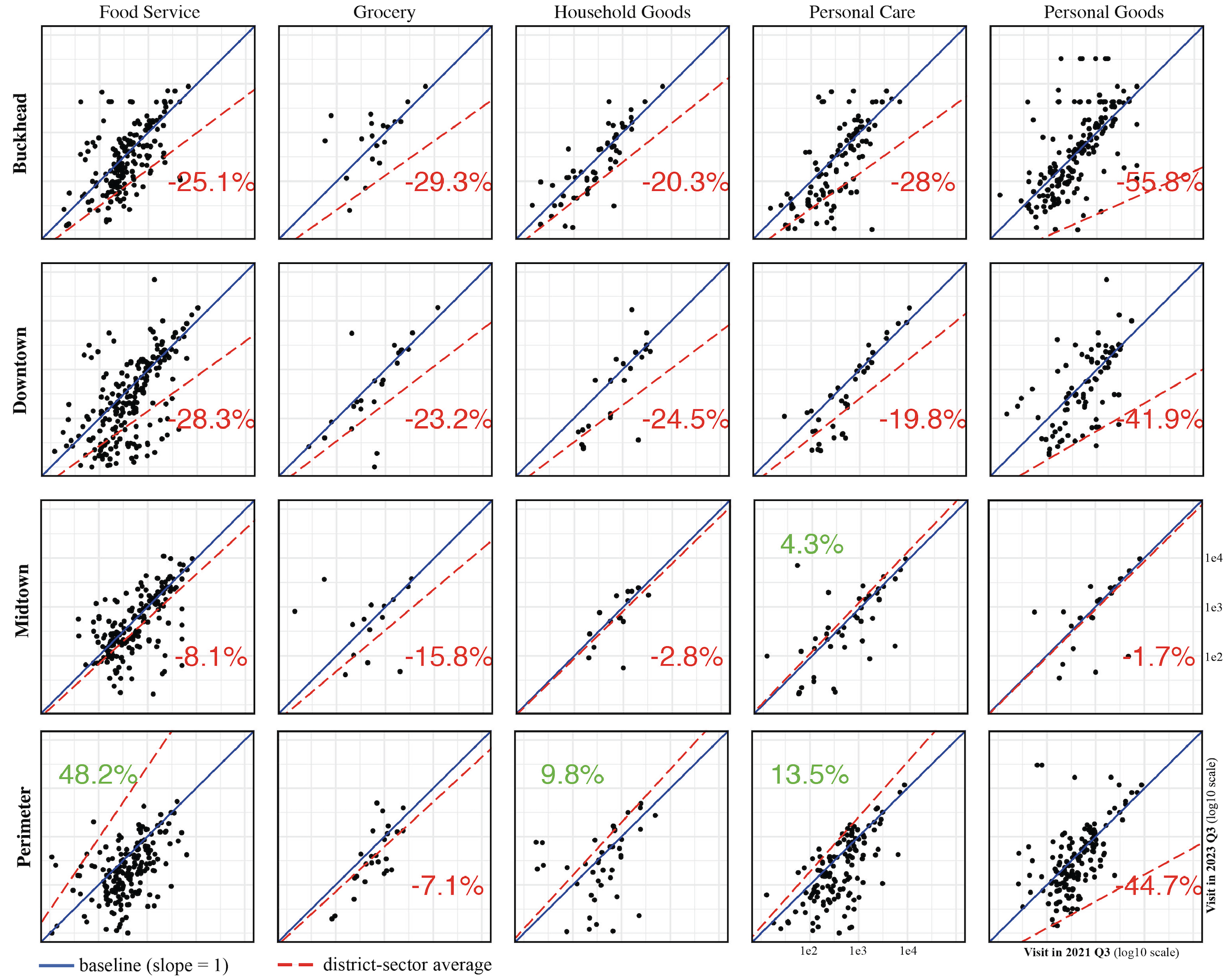Abstract (paper under peer review)
With the onset of the COVID-19 pandemic, retail stores in urban office districts were reported to lose customers as a regional trend due to the Stay-At-Home mandate.
However, as corporate policies shifted to voluntary Work From Home (WFH) post-pandemic, the role of built environment in distinguishing retail winners and losers of retail travel was still understudied.
To fill the gap, we used app-based mobile phone data from Advan to estimate individual-venue level retail travel frequencies and distances in four employment centers of Atlanta in Q3 2021 and Q3 2023.
The total frequency of travel to retail venues decreased by 20% in general, while the level of change varies by retail sector and employment center.
The median home-to-retail distance dropped from 14.7 km to 10.1km, with shorter distances found in more urban districts and specific store types.

Fig.1 Study Area and Retail POIs
The main hypothesis is that despite the overall loss of customer base, the impact of voluntary WFH is moderated by built environment factors, meaning retail venues in more desirable physical settings are associated with more customer visits. We tested this hypothesis by employing a mixed-effect spatial autoregressive regression (SAR) model with socioeconomic covariates and found that density, diversity, and venue attributes, both as independent and moderating effects, were significantly correlated with travel frequency at the individual-venue level. Sensitivity analysis on the interactive terms of built environment variables further implied that residential density, nearby amenity, and land use mix had substantial moderating effects on retail travel frequency. Ultimately, these findings provide much-needed information for policymakers, planners, and urban designers on the characteristics of retail travel post-pandamic, as well as the moderating role of built environment variables. This information can be useful for designers and policymakers to make informed decisions on preserving and facilitating a more equitable and prosperous retail landscape by targeted built environment retrofits and fixes. Studies of an alternative or expanded geographic scope can be conducted in the future for comparison and cross-validation.

Fig.2 Individual- and aggregate-level changes in travel frequency between Q3 2021 to Q3 2023 by employment center and sector.

Fig.3 Weighted Kernel Density Estimation (WKDE) on home-to-retail distances by employment center and sector
This paper is developed from our conference presentation at City Form Lab, MIT DUSP.